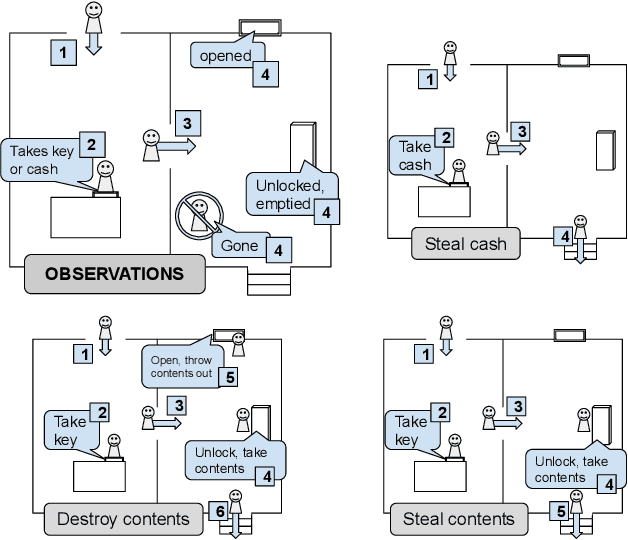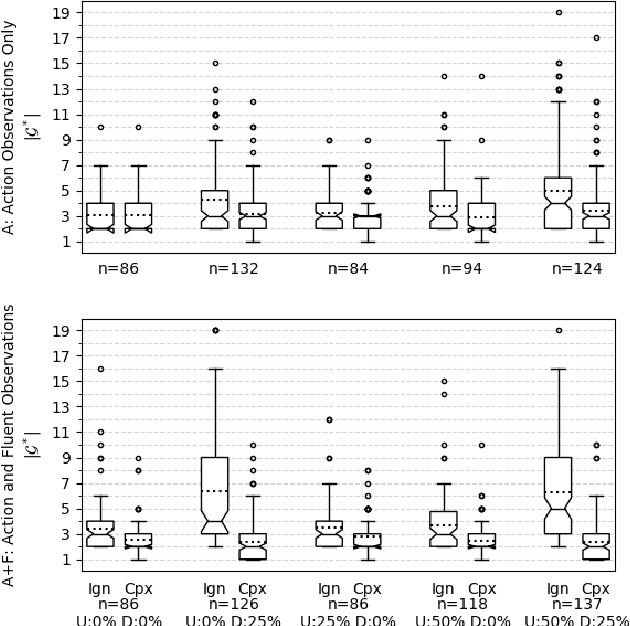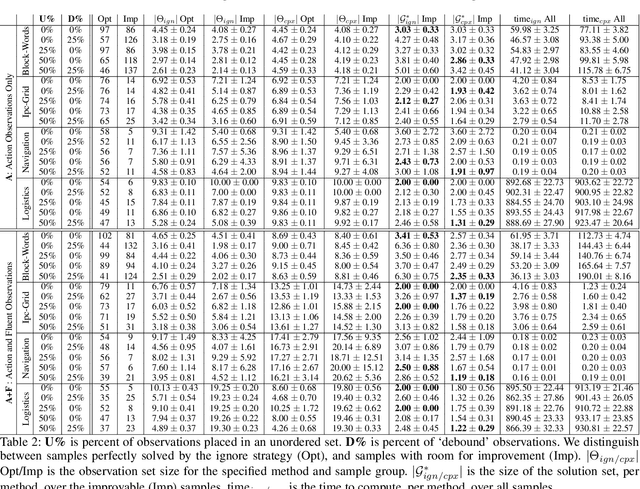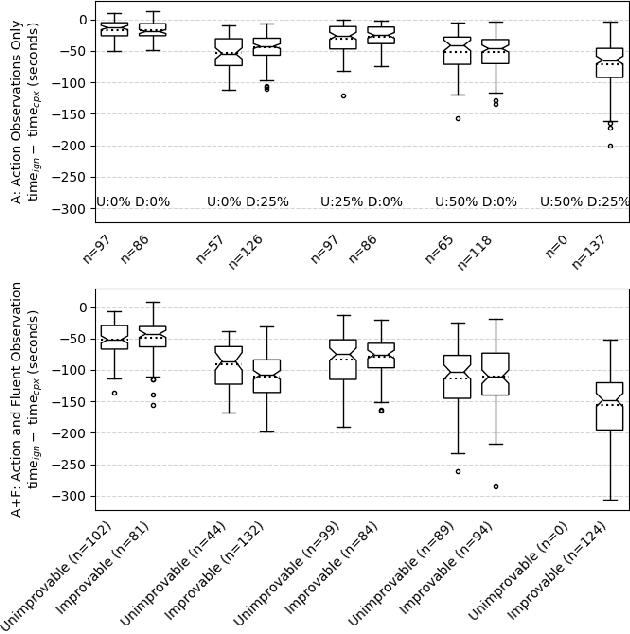Partial-Order, Partially-Seen Observations of Fluents or Actions for Plan Recognition as Planning
Paper and Code
Nov 14, 2019



This work aims to make plan recognition as planning more ready for real-world scenarios by adapting previous compilations to work with partial-order, half-seen observations of both fluents and actions. We first redefine what observations can be and what it means to satisfy each kind. We then provide a compilation from plan recognition problem to classical planning problem, similar to original work by Ramirez and Geffner, but accommodating these more complex observation types. This compilation can be adapted towards other planning-based plan recognition techniques. Lastly we evaluate this method against an "ignore complexity" strategy that uses the original method by Ramirez and Geffner. Our experimental results suggest that, while slower, our method is equally or more accurate than baseline methods; our technique sometimes significantly reduces the size of the solution to the plan recognition problem, i.e, the size of the optimal goal set. We discuss these findings in the context of plan recognition problem difficulty and present an avenue for future work.
 Add to Chrome
Add to Chrome Add to Firefox
Add to Firefox Add to Edge
Add to Edge